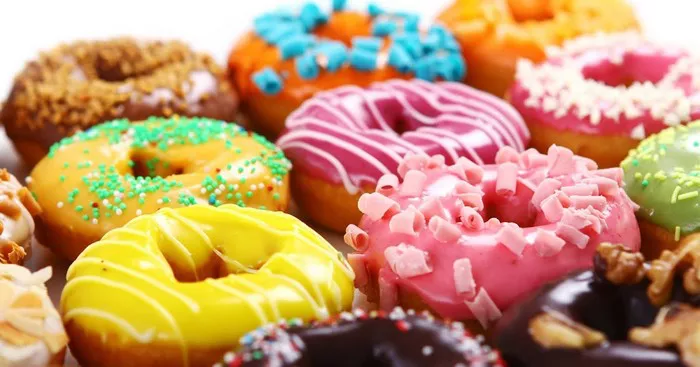Donuts, those delightful treats enjoyed by people of all ages across the globe, have a fascinating journey from raw ingredients to the glazed or powdered confections that tantalize taste buds. The process of making donuts involves precision, skill, and an understanding of both the art and science of baking. From mixing the dough to frying or baking, and finally coating with various toppings, each step contributes to the final product’s texture, flavor, and appearance. In this article, we delve deep into the intricacies of donut production, exploring the time-intensive procedures that culminate in everyone’s favorite sugary indulgence.
The Foundation: Dough Preparation
The journey of a donut begins with its dough. Depending on the type of donut being made—yeast-raised or cake—a different set of ingredients and processes come into play. Yeast-raised donuts require time for the yeast to ferment and leaven the dough, while cake donuts rely on chemical leaveners like baking powder to achieve their characteristic texture.
Yeast-Raised Donuts
1. Ingredient Preparation and Mixing:
Flour, sugar, yeast, milk, eggs, and flavorings are combined in precise quantities to form the dough.
Time Required: 15-20 minutes for ingredient preparation and 8-10 minutes for mixing.
2. First Proofing:
The mixed dough is left to rest in a warm environment to allow the yeast to ferment and the dough to rise.
Time Required: 1-2 hours, depending on ambient temperature and dough recipe.
3. Shaping:
Once proofed, the dough is punched down to remove excess gas and then shaped into individual donut rings.
Time Required: 10-15 minutes.
4. Second Proofing:
The shaped donuts undergo a second proofing to allow them to rise again before frying or baking.
Time Required: 30-45 minutes.
Cake Donuts
1. Ingredient Preparation and Mixing:
Flour, sugar, baking powder, milk, eggs, and flavorings are combined to form the batter.
Time Required: 10-15 minutes for ingredient preparation and mixing.
2. Resting the Batter:
The batter is rested to hydrate the flour and allow the baking powder to activate.
Time Required: 30-45 minutes.
3. Shaping:
The rested batter is portioned and shaped into donut rings or other desired shapes.
Time Required: 10-15 minutes.
SEE ALSO: Is Shipley’s Only in Texas? All You Need to Know
Cooking Techniques: Frying vs. Baking
Once the dough or batter has been prepared and shaped, the next step in donut production involves cooking the donuts through either frying or baking. Each method imparts a distinct texture and flavor profile to the finished product.
Frying
1. Oil Heating and Temperature Control:
Oil is heated to a specific temperature suitable for frying donuts (typically between 350-375°F or 175-190°C).
Time Required: 10-15 minutes for oil heating and stabilization.
2. Frying Process:
Donuts are carefully placed into the hot oil and cooked until golden brown on each side.
Time Required: 1-2 minutes per side, depending on donut size and desired crispiness.
3. Draining and Cooling:
After frying, donuts are removed from the oil, drained briefly to remove excess oil, and allowed to cool on racks.
Time Required: 5-10 minutes.
Baking
1. Oven Preheating:
The oven is preheated to the appropriate temperature (usually around 375°F or 190°C) for baking donuts.
Time Required: 10-15 minutes.
2. Baking Process:
Donuts are placed on baking sheets and baked until they are lightly golden and cooked through.
Time Required: 10-12 minutes, depending on oven temperature and donut size.
3. Cooling:
Baked donuts are allowed to cool on racks to room temperature before proceeding to the next steps.
Time Required: 10-15 minutes.
Finishing Touches: Glazing, Filling, and Decorating
The final stage of donut production involves adding toppings, fillings, or glazes to enhance flavor and visual appeal. This step requires careful attention to detail and creativity to produce donuts that are not only delicious but also visually enticing.
1. Glazing:
Donuts may be dipped in a variety of glazes, including chocolate, vanilla, maple, or fruit-flavored glazes.
Time Required: 15-20 minutes for glaze preparation and dipping.
2. Filling:
Some donuts are filled with creams, custards, jams, or other fillings using pastry bags or injectors.
Time Required: 10-15 minutes for filling preparation and injecting.
3. Decorating:
Donuts can be decorated with sprinkles, nuts, edible glitter, or other decorations to add texture and visual appeal.
Time Required: 10-15 minutes for decorating.
Conclusion
The process of making donuts is a labor of love that requires patience, precision, and a deep understanding of baking techniques. From mixing the dough to frying or baking, and finally adding glazes or fillings, each step contributes to the overall quality and flavor of the finished product. Whether enjoyed fresh from the fryer or oven, donuts continue to hold a special place in the hearts and taste buds of people around the world.

